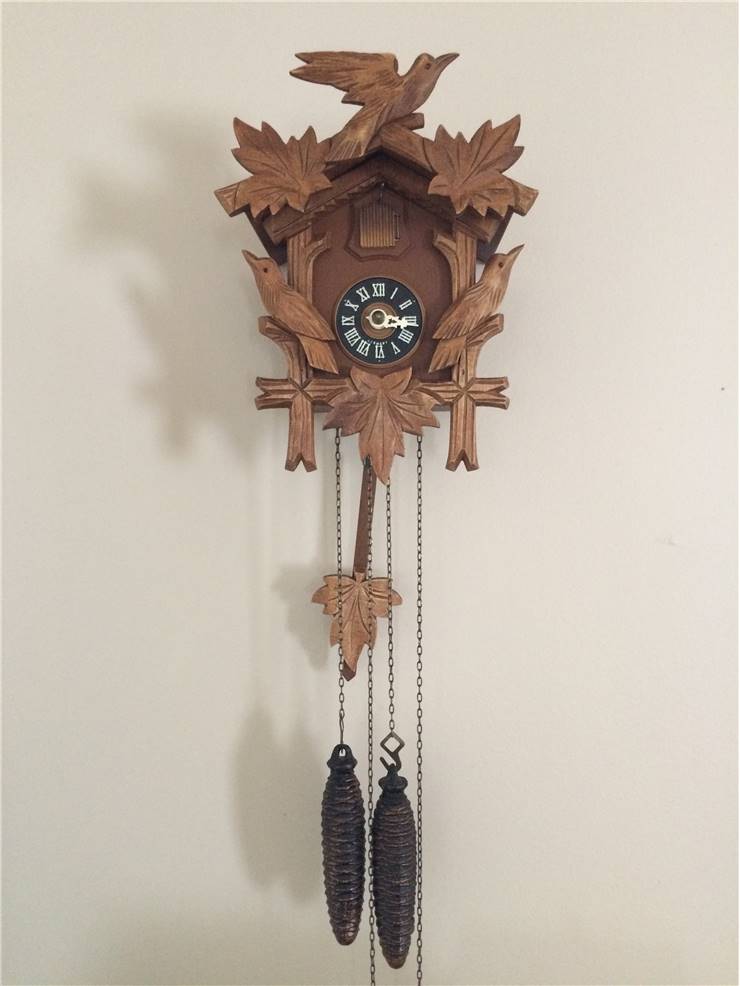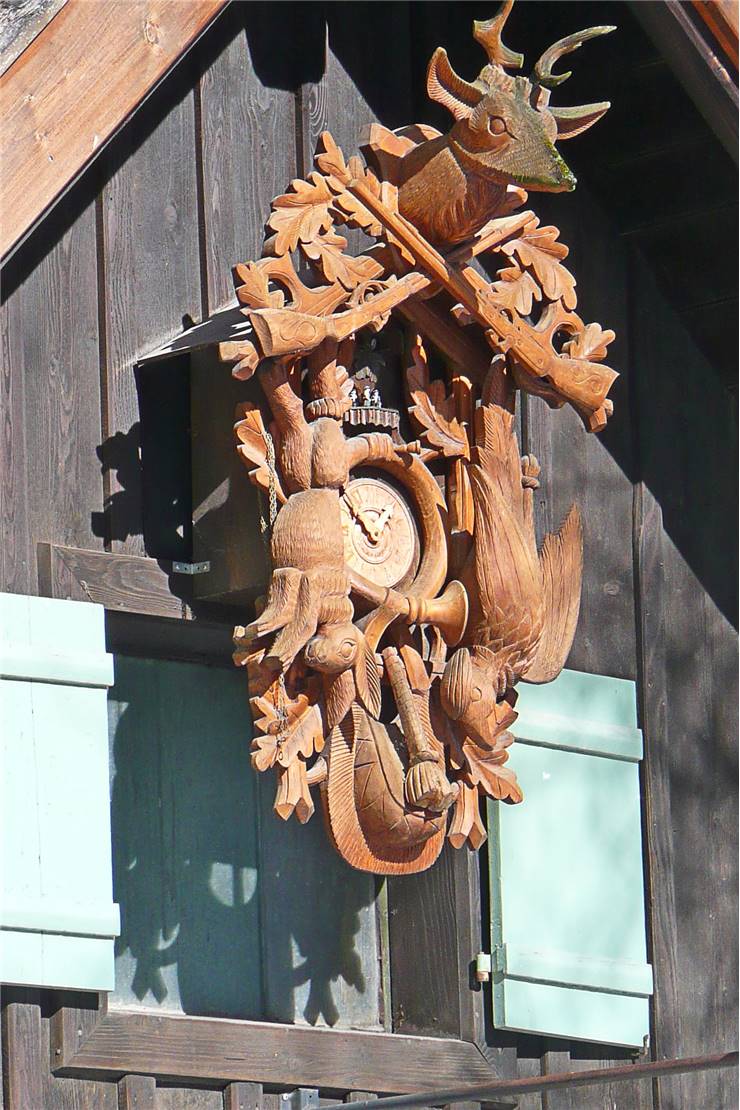Cuckoo Clock- History and Types of Cuckoo Clocks
A cuckoo clock strikes the hours with a sound like a cuckoo bird’s call. The Cuc-koo sound is made by two tiny pipes. The clock movement activates it sending a puff of air into them. It strikes a number of strikes according to the actual time. The dials are usually Roman numerals.
It has a mechanism with cuckoo bird figure that moves forward with each strike through a small trap door. Sometimes the bird can open its beak and flaps its wings. In the background, it can be added a sound of other birds or waterfall.

Some types can have night silence feature to determine hours when not to strike.
Cuckoo clocks can be made in chalet style, a hut shape traditional for The Alps, to hang on a wall. They are made traditionally in carved style, the wooden case has animal and carved leaves decorations.
The additional function was added, a half-hour and full hour chime sequences. The most famous chime tune is like a Swiss music box tune. Because of this, a third weight was needed for the hour strike. Some cuckoo clocks can play twelve different melodies, one for each hour.
A weight suspended from a pivot to swing freely is called pendulum. Pendulum clock uses the pendulum as a timekeeping element. For a long time, pendulum clock was the most precise timekeeper. In early days, pendulum clocks were made handmade, they were rich in ornamentation and expensive. They were status symbols. Nowadays pendulum clocks have antique and decorative value. One type of pendulum clock is a cuckoo clock.
They are often weight driven. The weights are traditionally made in a pine cone shape. Cuckoo clock was made with two types of movement:
- one day or 30-hour movement – needed winding once a week and has two weights for timekeeping and striking mechanism
- eight-day movement – needed winding every day and has one weight for both mechanisms
The origin of its invention is not certain. Some descriptions of the cuckoo clock are from 17th century. In 1629, Philip Hainhofer described cuckoo clock in his writings. In 1650, Athanasius Kircher described cuckoo clock in the handbook about music. In 1669, Domenico Martinelli described cuckoo clock in his handbook. They were mass produced since the 18th century. Some stories point to its produce origin to the Schwarzwald forest area, Germany. Black Forest type of clock called Rahmenuhr had a picture frame on the wooden background usually a typical Black Forest scene, or scenes like hunting, deer heads, birds, pine cones, leaves, military, mythology, Christian religious, love, family, birth, and death. There were styles with wood decorated ornaments and 3-D woodcarvings.

Modern cuckoo clocks have minimalist aesthetic, with simple, clear lines, are flat and smooth without carvings. They could have unconventional colors and include phrases and text.
Cuckoo clocks are usually weight driven, but they can be spring driven, quartz or digital.
Like grandfather clocks, cuckoo clocks were also exported a lot. It is a cultural icon of Germany and a souvenir from Germany, Austria and Switzerland.

